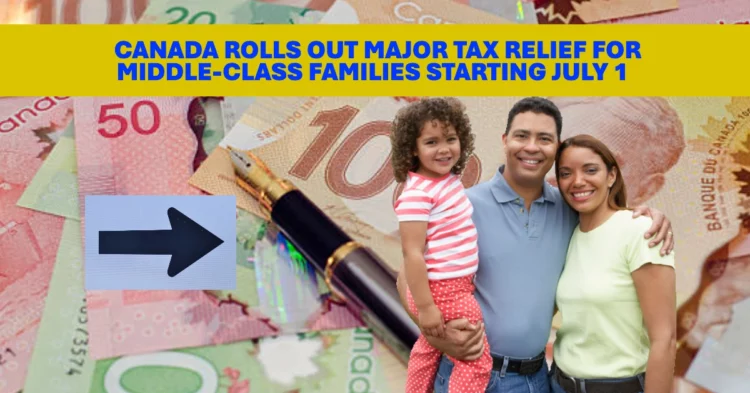A Closer Look at the One-Percentage-Point Reduction in the Lowest Income Tax Bracket
Starting July 1, 2025, the Canadian federal government will reduce the lowest marginal personal income tax rate from 15% to 14%. This strategic change is designed to deliver meaningful relief to middle-class Canadians, benefiting millions of taxpayers across the country.
How Much Will You Actually Save?
This tax cut will yield maximum savings of up to $420 per individual and $840 per couple by the 2026 tax year. According to federal estimates, Canadians will collectively save over $27 billion in taxes over five years as a result of this measure.
Table of Contents
Who Benefits Most?
Over 22 Million Taxpayers Will See Their Federal Taxes Drop
Nearly 22 million individual taxpayers will see lower federal income taxes, with almost half of the total relief going to those in the first tax bracket—individuals earning up to $57,375 in 2025.
Even Canadians who currently do not owe federal income tax—around one-third of all tax filers—could benefit in future years if their income rises.
When Will You Notice the Change?
Mid-Year Implementation in 2025 Means Gradual Transition
Because the tax cut takes effect on July 1, 2025, the full-year average tax rate for that year will be 14.5%. Starting in 2026 and onwards, the full-year rate will settle at 14% for those in the lowest tax bracket.
To reflect the change, the Canada Revenue Agency (CRA) will revise its payroll deduction tables for the July to December 2025 period. This means that workers may begin to see less tax withheld from their paycheques starting this July.
What Income Levels Will See the Biggest Impact?
Households Earning Under $114,750 in 2025 Get Most of the Relief
The bulk of tax relief will go to individuals and families with taxable incomes below $114,750. In fact, nearly half of the total benefits will go to those earning in the lowest income tax bracket.
The rate used to calculate most non-refundable tax credits—such as the basic personal amount and spousal amount—will also be aligned with the new 14% rate, maximizing the benefit.
Filing Season Expectations: What to Know for Spring 2026
If you’re unable to benefit immediately through adjusted payroll withholdings, you’ll still receive the full benefit when filing your 2025 tax return in spring 2026. This ensures everyone eligible receives their fair share of the tax cut, regardless of how they earn or report their income.
Working Past 65? What You Need to Know About CPP, OAS, and Tax Planning
CPP and OAS Payment Arriving Soon in May 2025: Check the Amount, Eligibility, and Payment Dates
CPP OAS Payment June 2025 Details: What You’ll Get, When It Arrives & Who’s Eligible
Canada Benefit Payment Increase 2025: Inflation Boosts, New Programs & What to Expect this July
Why This Matters: Long-Term Relief for Canadian Families
This reduction represents more than just a short-term adjustment—it’s a long-term tax policy shift designed to bolster the financial well-being of middle-class Canadians. It not only enhances take-home pay but also helps families better manage inflation, housing costs, and daily living expenses.
Bottom Line: What You Should Do Next
- Check your pay stubs starting in July to confirm lower tax withholdings.
- Update your tax planning and savings strategies for 2025–2026.
- Consult a tax advisor if you’re unsure how the new rate applies to your specific situation.
As the cost of living continues to rise, this federal tax reduction offers concrete financial relief and an opportunity for families to keep more of their hard-earned income.

